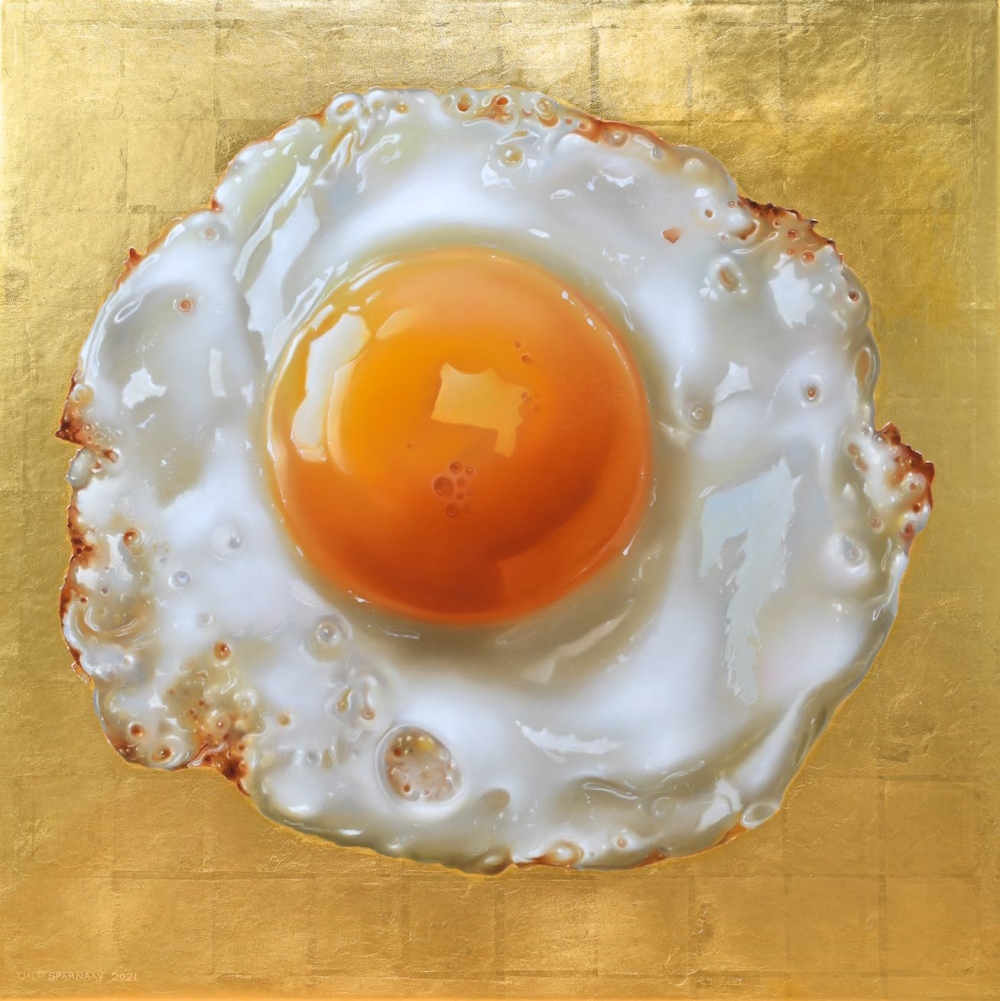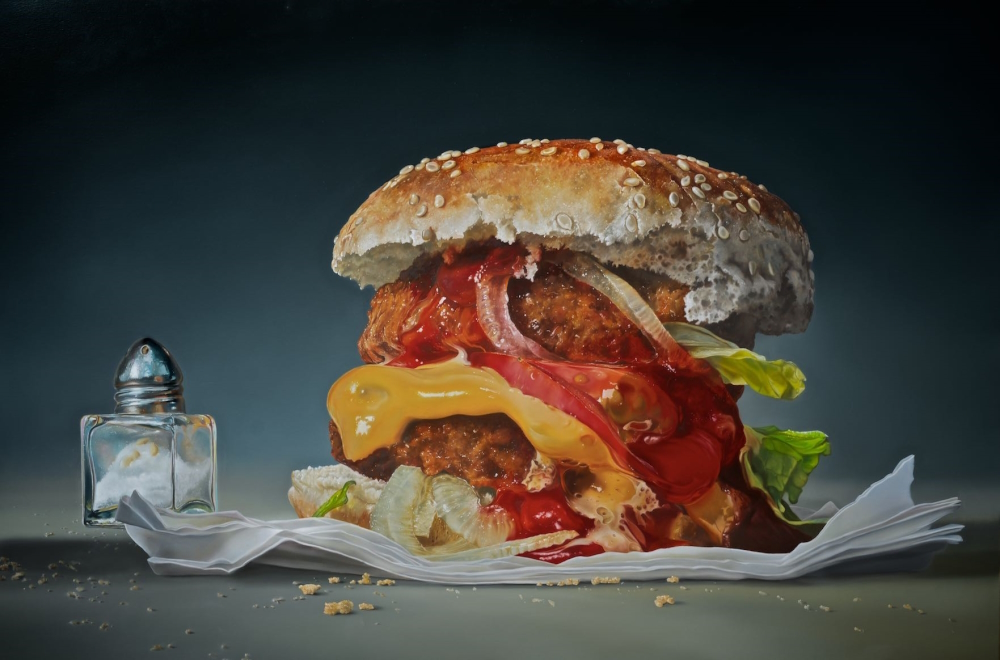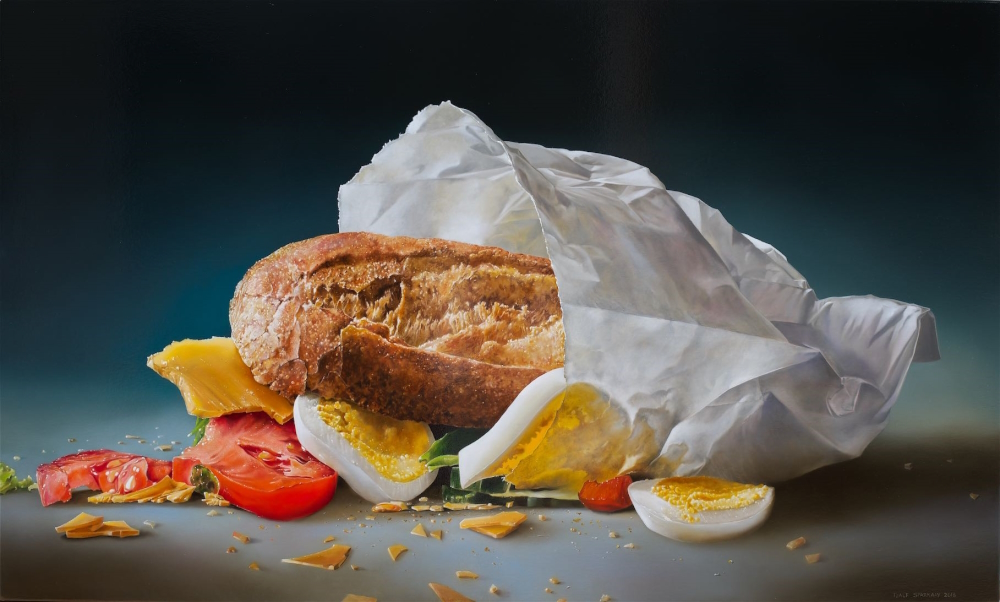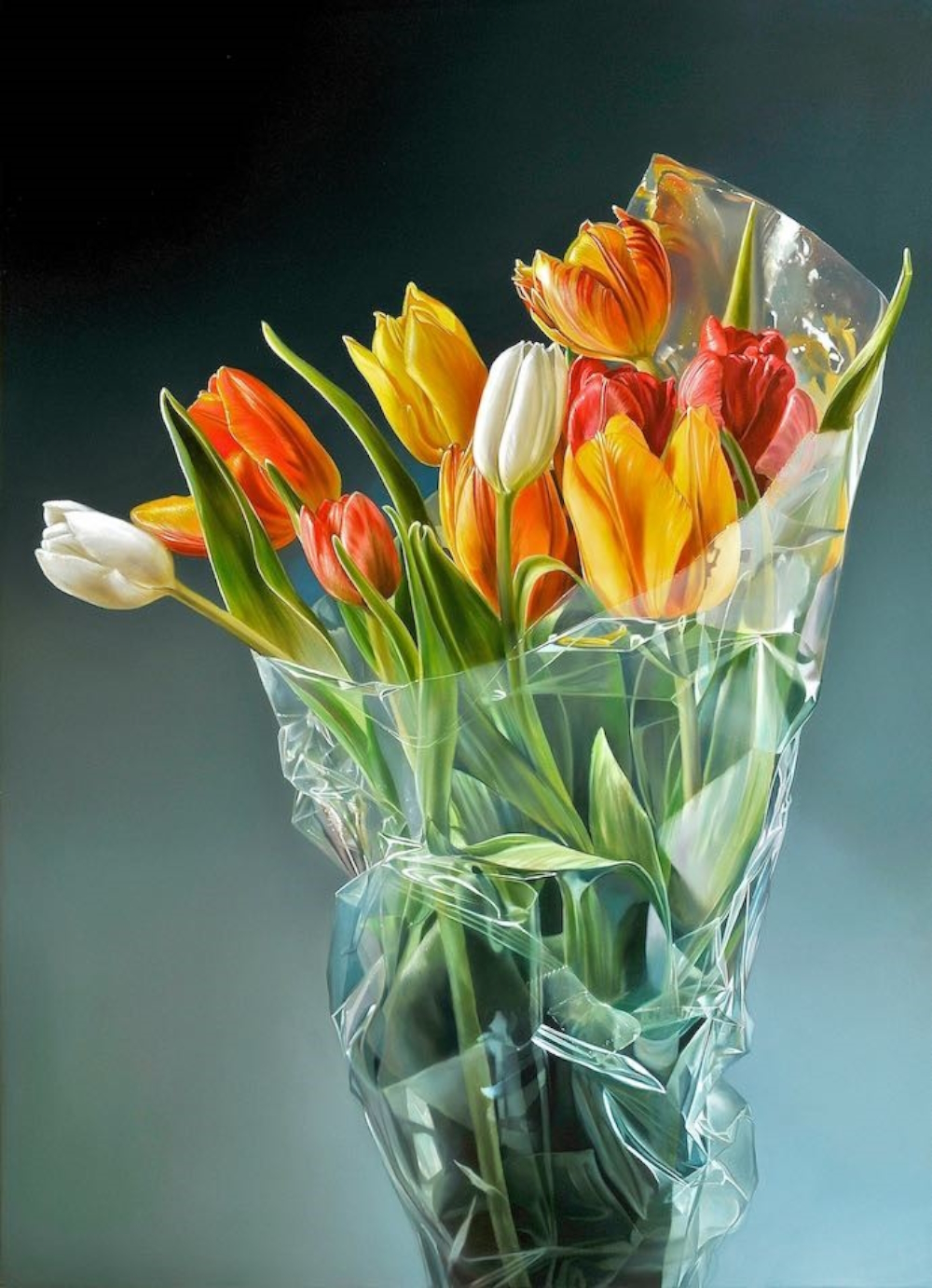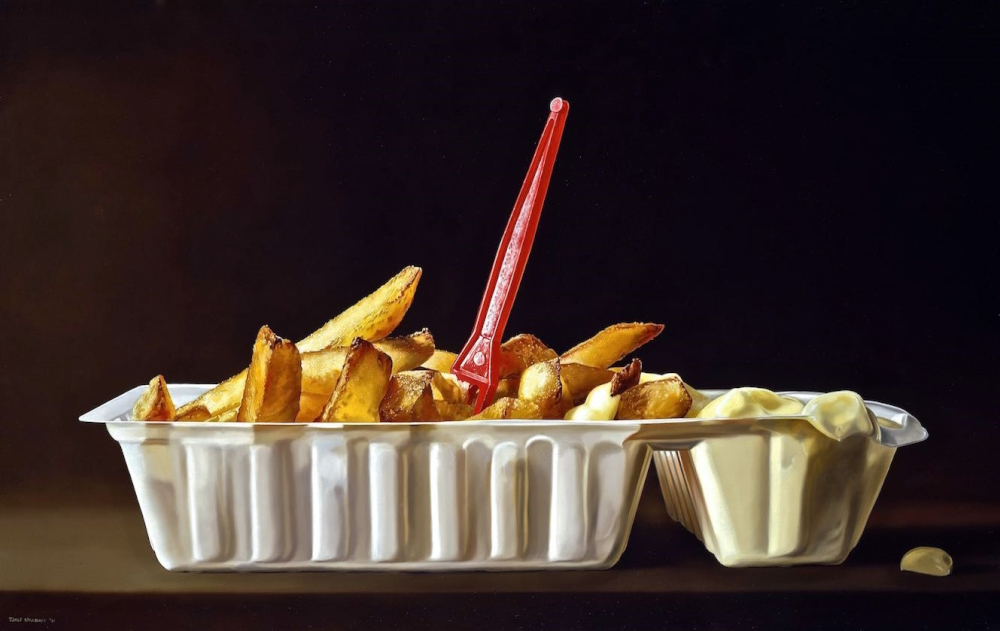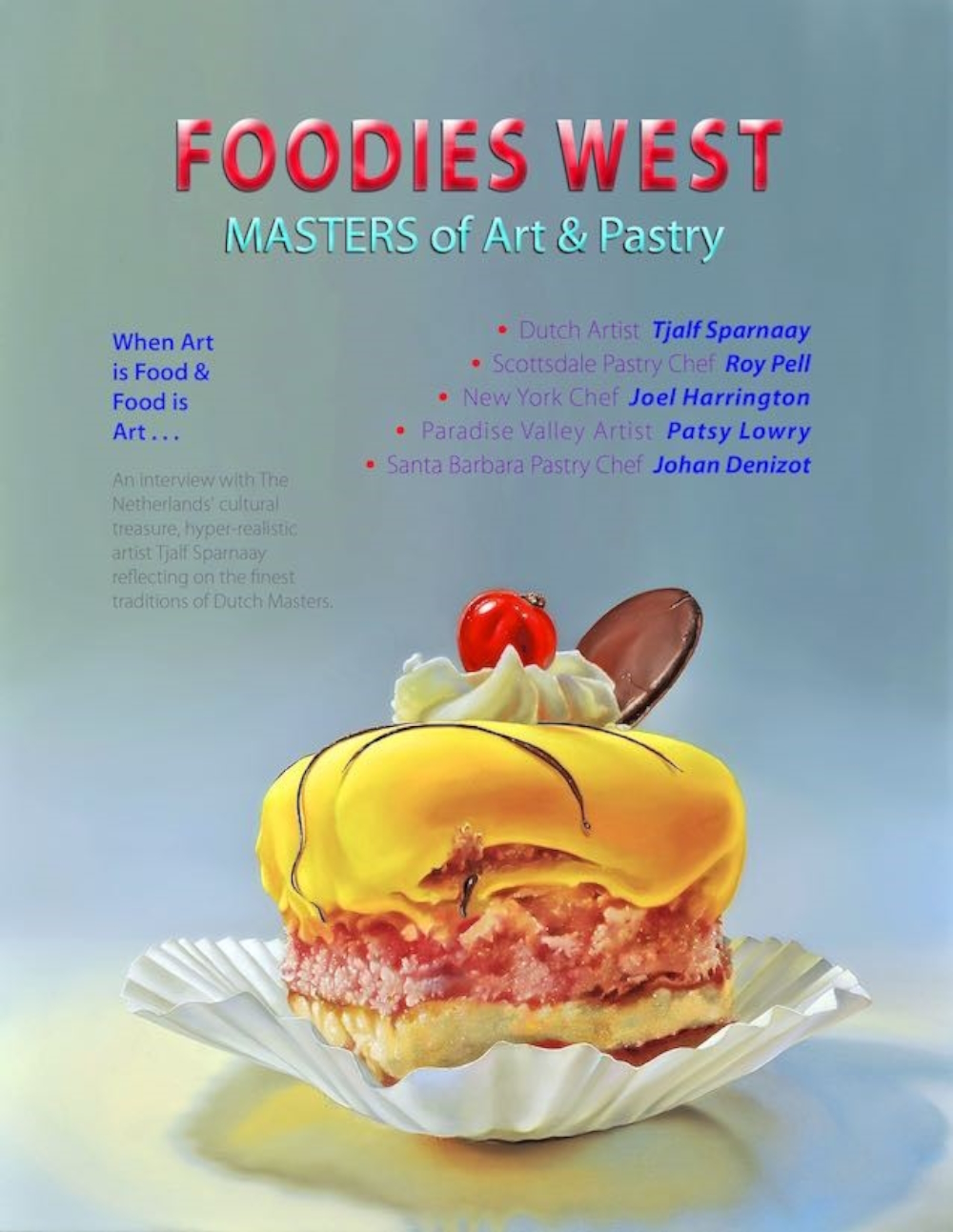Tjalf Sparnaay
megarealistic painter
The Netherlands
A fried egg gained him worldwide fame. Neither a real prepared one nor a photograph, but a large-scale oil-painting of it. It’s the most famous work of a creative that invented the term 'Megarealism' for the look of his oeuvre. That‘s part of the contemporary global art movement of Hyperrealism. A native Dutch is, according to Post-Modern Times, the journal of aestetics and art history, considered „one of the most important painters working in that style“.
Tjalf Sparnaay
megarealistic painter
The Netherlands
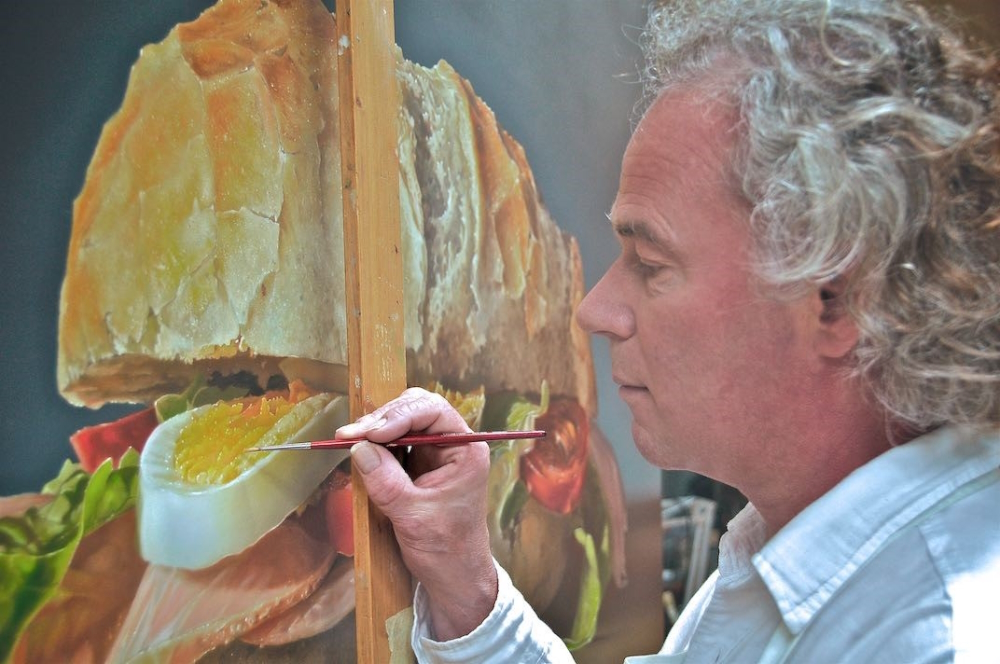
An educated sports/gym teacher becomes a self-taught successful painter. The career of Tjalf Sparnaay is a special one - purely driven by his urge to create. In the world of his learned profession the man (* 1954 in Haarlem, The Netherlands) was able to work out hard, but couldn’t achieve self-realization. For this reason the talented autodidact (photography) switched to art by designing postcards. „When he informed his employer he wanted to leave to paint“, knows onlinegallery.art „the taskmaster offered him a trip to New York to study photo realism. Here, Sparnaay discovered Richard Estes (1932), Ralph Goings (1935-1995) and Charles Bell (1928-2016). He also understood the importance of staying true to the traditions of the old Dutch masters, and their use of light.“ Therefore the still lifes of icons like Rembrandt and Vermeer became an important inspiration for his own works where the techniques of the past and the present melt.
Starting in 1987 Tjalf Sparnaay painted in sizes from 30 x 40 cm up to 120 x 180 cm Amsterdam street scenes first, followed by shiny parts of Harley Davidsons or a red sports car on the moon. Then the self-taught vituoso focused on „everyday items, which have never been painted in such a megarealistic fashion“ (suedwestgalerie.de) and by doing so „give reality an added push“ (artistaday.com) – in particular enlarged foodscapes (sized 120 x 300 cm) in the form of giant fried eggs, hamburgers, French fries or salads. „Food is an ordinary subject that comes along with my desire to show people their own common world“, Tjalf Sparnaay told China’s Neweekly. „If any message, I can bring it better in this way. I love to show people light and dark metaphors which can be seen in all my paintings.” This explanation is rounded up by a quote from him on the16types.info: „By using trivial and everyday objects, I enable reality to flow from my brush once more. My intention is to give these objects a soul and a renewed presence.“
Why this creative has chosen a style that he calls Megarealism was answered by him in an interview with Foodies West magazine: „This concept is meant to make a difference with Photorealism/Hyperrealism. Mega stands for XXL and has to sound nowadays, contemporary and hip. It doesn't have the direct association with photographs. Megarealism has to do with blowing up things in a extreme realistic and painterly way. I don't just follow and copy the photo, I work out a new image in the tradition of Dutch 17th century way of still life painting. Where photography ends, my Megarealistic paintings start.“
On his website the artist states: „My paintings are intended to enable the viewer to experience the reality again, again letting discover the essence of the object that has become so commonplace“ and adds: „I want to return to the DNA of the universal structure in all its beauty.“ His strive is shown in detail in the 40 minutes-documentary ‚Getting Closer‘ (see link below on the right side) and the exhibition catalogue ‚Closer: The megarealism of Tjalf Sparnaay‘.
Tjalf Sparnaay, whose art is exhibited in London, New York et al. (including the retrospective ‚In The Picture‘ in the Dutch museum JAN in 2024), lives and works in Hilversum, The Netherlands.
Interview June 2023
Reinterpretating & experiencing reality again: ordinary objects in megarealistic style give the familiar a soul and a renewed presence
INTUITION/IMAGINATION
?: How does intuition present itself to you – in form of a suspicious impression, a spontaneous visualisation or whatever - maybe in dreams?
It’s often a sponvisualisation, but also just building the visualisation itself in mind.
?: Will any ideas be written down immediately and archived?
I used to do so a long time ago, nowadays I keep the best idea’s in my memory.
?: How do you come up with good or extraordinary ideas?
Don’t think in images other people came up with, force yourself to surprise.
?: Do you feel that new creative ideas come as a whole or do you get like a little seed of inspiration that evolves into something else and has to be realized by endless trials and errors in form of constant developments until the final result?
Most of the time they come as a whole idea, sometimes they need an evolution over many years.
?: What if there is a deadline, but no intuition? Does the first fuel the latter maybe?
Could accelerate the process, yes.
INSPIRATION
?: What inspires you and how do you stimulate this special form of imaginativeness?
Instantly ideas come easy, the working out is done in a chair, closed eyes and shaping by mind.
?: How do you filter between ideas that are worthwhile pursuing and bad ones that you just let go of?
What would the public say when they see it hanging on the wall in a museum.
?: Does an idea need to appeal to you primarily or is its commercial potential an essential factor?
Yes, the commercial potential is essential.
?: Do you revisit old ideas or check what colleagues or competitors are up to at times?
Yes.
CREATIVITY
?: What time or environment best suits your creative work process — for example, a time and place of tranquility or of pressure? Which path do you take from theory or idea to creation?
Tranquillity is essential. Shaping the idea and picture in mind first, thereafter real visualisation and composition in basic photography. In photoshop the rough finalization, the handwork is done by sketching the picture outlines on the canvas. The final paintingprocess takes 90 % of the time after this.
?: What’s better in the realization process — for example, speed and forcing creativity by grasping the magic of the moment or a slow, ripening process for implementation and elaboration?
It’s the workkflow of the process developed over the years.
?: Do you have any specific strategies you use when you're feeling stuck creatively?
Stop and start again.
?: How important are self-doubt and criticism by others during such a process process i.e. is it better to be creative on your own, only trust your own instincts, or to work in a team?
I totally work on my own, all the feedback is by myself and my wife her reactions are relevant.
?: Should a creative person always stay true to him- or herself, including taking risks and going against the flow, or must the person, for reasons of commercial survival, make concessions to the demands of the market, the wishes of clients and the audience’s expectations?
Regarding the art you should be the lonely hero, regarding making a living sometimes the market dictates your choice.
?: How are innovation and improvement possible if you’ve established a distinctive style? Is it good to be ahead of your time, even if you hazard not being understood?
Keep the new choices close to your soul and time will point it out if is right way.
?: When does the time come to end the creative process, to be content and set the final result free? Or is it always a work-in-progress, with an endless possibility of improvement?
Mostly a work is finished when nothing is bothering me anymore.
SUCCESS
?: “Success is the ability to go from one failure to another with no loss of enthusiasm.“ Do you agree with Winston Churchill’s quote?
Absolutely.
?: Should or can you resist the temptation to recycle a ‘formula’ you're successful with?
No.
?: Is it desirable to create an ultimate or timeless work? Doesn’t “top of the ladder” bring up the question, “What’s next?” — that is, isn’t such a personal peak “the end”?
You never know what is your top work as long as you keep working.
MY FAVORITE WORK:
My 'Fried Egg' paintings are unique in the world, nobody did this before. Nowadays they are copied and inspiring many artists as the Hamburger paintings do as well.
